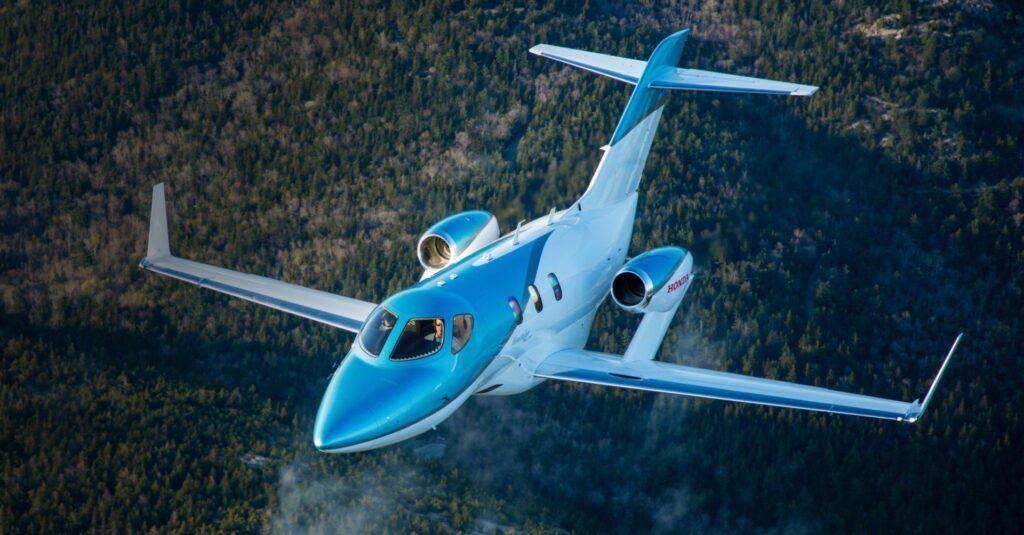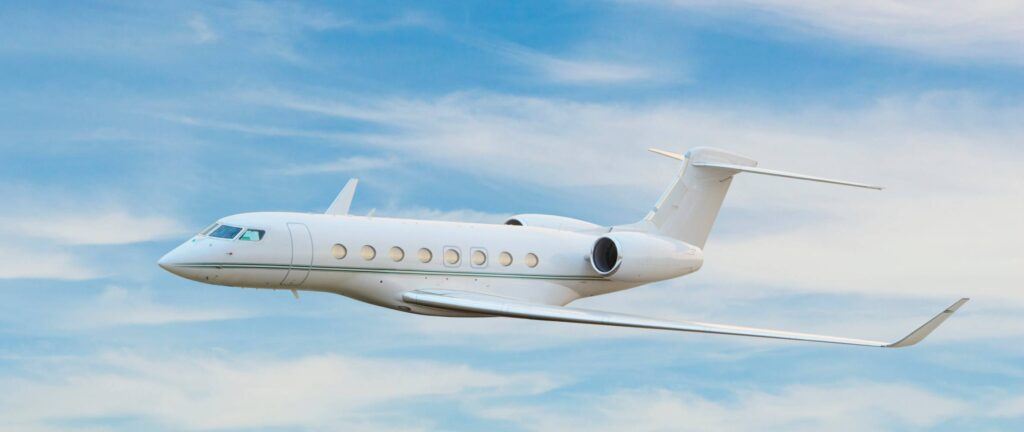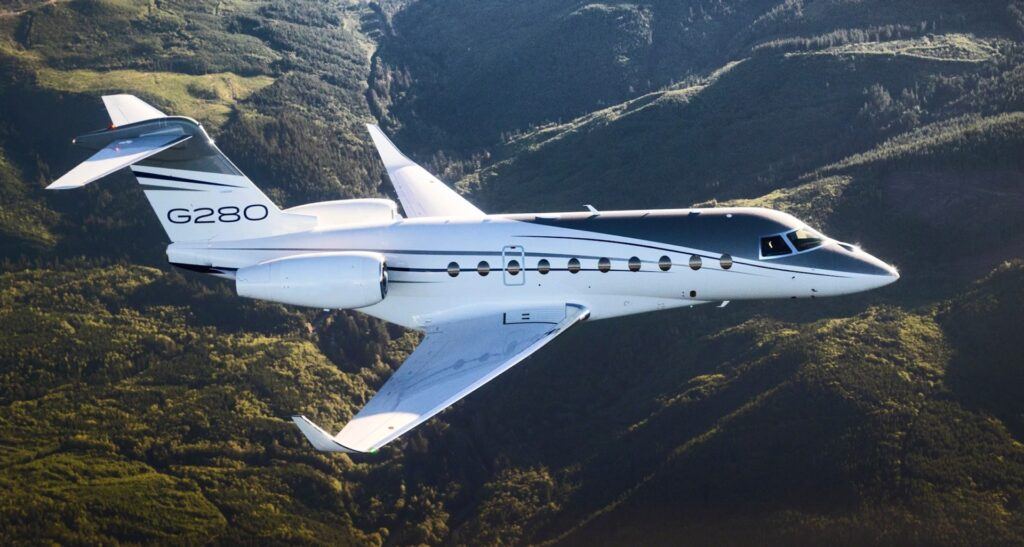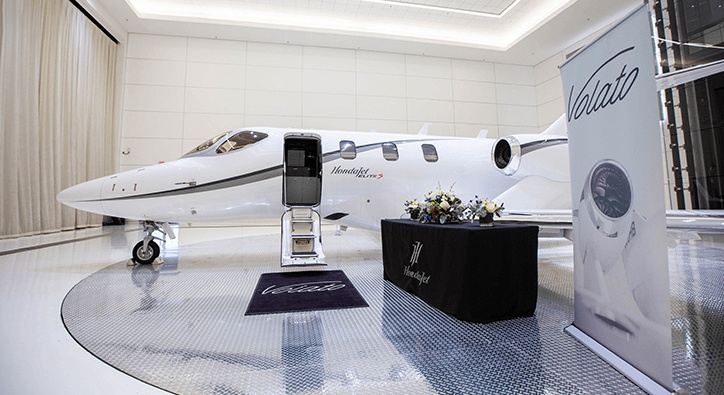
The world of small private jets: fast, efficient, and flexible.
Oct 23, 2023
15 min read
Small private jets are personal aircraft that can seat between four to eight people and are usually classified as very light jets (VLJ) or light jets. They are perfect for city hopping and other short-haul flights and make quick work of regional travel.
As the smallest private jets, they are often called entry-level jets, ideally suited for small businesses, families, and individuals who prefer to travel in style and without delay. Light and very light jets are a favorite among executives who pilot themselves.
Whether for business or pleasure, more jet setters are investing in private jets. But how much is a small private jet? What’s a light jet interior like? Below, we lay out the price, features, and specifications for the top small private jet models on the market today.
Advantages of owning a small private jet.
Cost-efficiency
It should come as no surprise that a light or very light jet is much more cost-efficient to operate than larger classes. Instead of two pilots, many VLJs are designed for one (although most operators prefer two crew for added safety).
Plus, they require less fuel, less hanger space, and have lower insurance costs. Light jets are roughly 250 percent more cost-efficient to maintain than a super mid-size jet.
Accessibility to smaller airports
A very light jet like the HondaJet requires much shorter runways for takeoff and landing. It can access thousands more airports across the country than larger classes of jets.
For example, the HondaJet Elite II requires a takeoff runway of 3,699 ft (1,128 m), whereas a super mid-size may need upwards of 5,000 ft (1524 m) to operate.
Time-savings and comfort
Jump between meetings in different cities or even different states. Head out of town in a fraction of the time it would take to drive. And never face the headaches caused by traffic and rush hour again.
Small private jets are like a personal taxi service, allowing you to jump from point A to point B quickly and without hassle. Nonstop flights, no security lineups, and no crowded gates — you are guaranteed a more seamless travel experience.
Features and specifications
Within the VLJ and light jet classes, only a handful of manufacturers specialize in these small jets. A few models dominate, winning the hearts of executives and frequent flyers everywhere.
HondaJet Elite II
The HondaJet is one of the most popular VLJs and the highest- and farthest-flying jet in its class. Not to mention, it’s the fastest small private jet on the market today. The HondaJet is ideal for trips with four passengers. It’s also one of the few VLJs with a fully enclosed lavatory.
The HondaJet has a modern engine that reduces CO2 emissions and fuel costs, while the fuselage and unique engine mount design reduce cabin noise. Combined with the Bongiovi sound system, HondaJet’s cabin delivers an exceptional in-flight experience.
| Range | 1,547 nm |
| Speed | 422 kts |
| Passenger Capacity | 2 crew + 4 to 5 passengers |
| Cabin Comforts | Fully enclosed lavatory, Bongiovi aviation sound system, may include a full galley and Wi-Fi |
| Price | $7.2 million |
Eclipse 500
The fully loaded twin-engine Eclipse 500 is a relatively new entrant into the light jet market. It’s considerably more affordable than other small private jets in the very light jet class. Although, it also has a slightly lower max range of 1,125 nm and a cruising speed of 370 kts.
Ideally suited for four passengers and a small payload, the Eclipse can fit upwards of six passengers, but this will dramatically reduce the range. The base model has an exquisitely outfitted interior, but upgrades are required for advanced entertainment features or a lavatory.
| Range | 1,125 nm |
| Speed | 370 kts |
| Passenger Capacity | 1 to 2 crew + 5 passengers |
| Cabin Comforts | Cabin pressure control, power outlets, leather seats, optional entertainment packages, and electric lavatory |
| Price | $2.2 million |
Cessna Citation M2-Gen 2
Technically a light jet, the Citation M2 is perfect for flights under 1,550 nm. It can hit a maximum cruising speed of 404 kts and has a max payload of 3,810 lbs. The M2 has space for upwards of seven passengers and enough room for 45.6 cu ft of baggage.
As per Cessna, the M2-Gen 2 has advanced automation and avionics that promise “Real-time Diagnostics. Real-Time Answers.” The cockpit is optimized for one pilot.
| Range | 1,550 nm |
| Speed | 404 kts |
| Passenger Capacity | 1 to 2 crew + 7 passengers |
| Cabin Comforts | Wireless charging and enhanced connectivity, in-flight accessible baggage compartment |
| Price | $6.0 to $7.0 million |
Embraer Phenom 100
Billed by Embraer as “the complete entry-level jet,” this four- to five-passenger small aircraft is designed for “executives who enjoy piloting themselves.” That means it’s dialed in for a single pilot with enhanced safety features and superior turboprop-grade efficiency.
The Phenom 100 is optimized for a max range of 1,178 nm with a respectable max speed of 400 kts. You can expect a cabin outfitted with all the amenities, including a lavatory, galley option, and passenger comfort zones.
| Range | 1,178 nm |
| Speed | 400 kts |
| Passenger Capacity | 1 crew + 4 to 5 passengers |
| Cabin Comforts | Fully enclosed lavatory, small galley or closet, club seating, and passenger climate control zones |
| Price | $5 million |
Small private jet interior and amenities
What to Expect
In terms of cabin design and amenities, what can you realistically fit inside a small private jet interior? Inside a small private jet, there is often more than you might expect.
The top-end fixtures and furnishings you’d find on a larger jet can also be expected in the smallest models, albeit in a more concentrated format. That means leather club seats, bespoke design, Wi-Fi connectivity, and noise suppression technology to improve the in-flight experience.
But keep in mind, while the very light jets and light jets are suitable for four to eight passengers, the more people you squeeze in, the lower the range and efficiency. Most performance metrics like cruising speed and range are optimized for the four- to five-person range. Executive seating is also designed around the optimal passenger load rather than the max.
Beyond the executive seating, it’s not uncommon to find a fully enclosed lavatory, a small galley, and Wi-Fi connectivity. Of course, these features vary between models and retrofits.
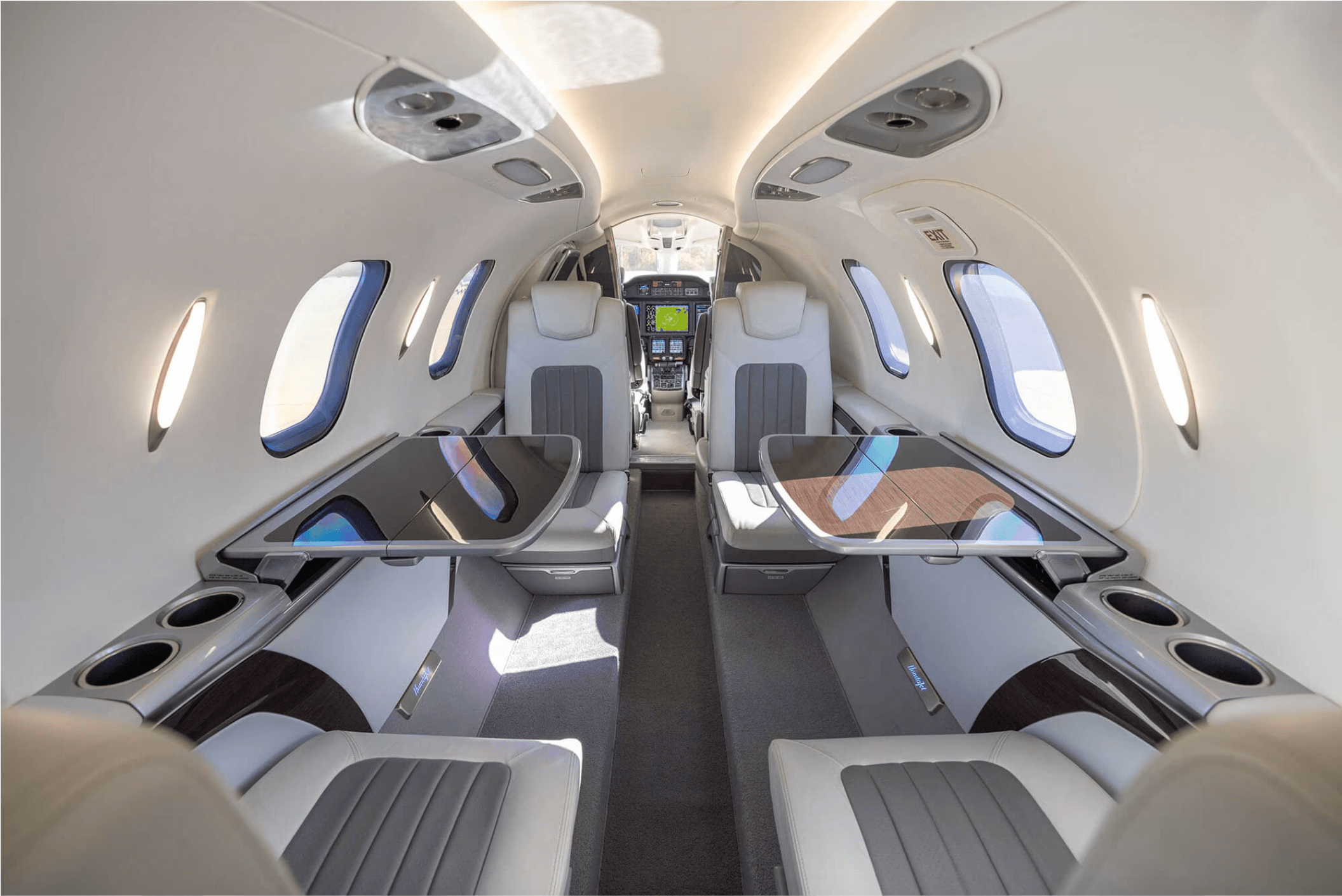
Considerations for choosing the ideal small private jet.
A lot of thought and consideration should go into any major purchasing decision, including determining the best small private jet for your lifestyle, travel needs, and financial circumstances.
Cost of a small private jet
How much is a small private jet? New aircraft in the VLJ and light jet class types start at $2.2 million. But, depending on additional features and customized interior elements, a small jet may cost as much as $10 million. There are a wide variety of price points between the two ends of the spectrum.
For example, the Eclipse 500 is on the lower end of the investment spectrum, coming in at $2.2 million for the base model. An Embraer Phenom 100 starts at $5 million, and a HondaJet starts at $7.2 million.
Specific travel needs
Whether a 4-seater private jet or an 8-seater private jet, you’ll have to assess your specific travel needs to determine the best fit.
While a four- to five-passenger HondaJet is perfect for a small executive team or an individual, if you want to fly with six or more passengers, you’ll likely need to swap models — to upgrade from a VLJ to a light jet.
Would you like to access your baggage in-flight? Do you need a lavatory or a galley? These are other questions to consider before pulling the trigger on a specific model.
Maintenance and operational costs
Light and very light jets jets mean lower annual maintenance costs and operational expenses. Small private jet costs do vary depending on make, model, and aircraft size, but they are more fuel-efficient and take up less hangar space than larger classes.
Under Volato’s fractional ownership model, as an example, you can expect to pay $5,950 a month for management fees for a 1/16th share of a HondaJet. Jump classes to a super mid-size Gulfstream G280 and the monthly management costs increase to $20,950 for a 1/16 share.
Small jet vs. larger aircraft.
Advantages and disadvantages
| Small Private Jets(VLJ to Light Jet) | Larger Private Jets(Midsize to Super Midsize) | |
|---|---|---|
| Capital investment | Purchase price between $2.2 and $10 million | Purchase price starting at $25 million |
| Management costs | Lower management costs, including crew, hangarage, maintenance, and insurance | Measurably higher management costs, including crew, hangarage, maintenance, and insurance |
| Range | Limited range, typically up to 2,000 nm | Longer range, typically up to 3,000 – 5,000 nm |
| Passenger Capacity | 4 to 8 passengers | 8 to 10 passengers comfortably |
| Cabin Comfort | Smaller cabins, less headroom, and limited amenities | Larger cabins with more headroom, better amenities, and often a stand-up cabin |
| Runway Access | Shorter runways and more airports | Longer runways, limiting access to some smaller airports |
| Baggage Capacity | Limited baggage capacity | Larger baggage capacity |
| Resale Value | Faster depreciation due to limited range and amenities | Hold value due to increased range and amenities |
When to choose a small private jet
A small private jet makes the most sense for quick regional travel between cities or to nearby states. It’s a high end private taxi to make that next meeting, zip to the mountains for a weekend escape, and avoid the bumper-to-bumper freeway nightmare.
Very light jets or light jets make a great entry point into private jet ownership and are often the jet of choice for executives who are licensed pilots. With many designed for single-piloting, there has never been a better way to make an entrance than to land your small private jet.
Just keep in mind that while there are small jets that can accommodate eight or more people, generally, performance is optimized with fewer. For example, the HondaJet is best suited for four passengers, even though it can handle five. If your flights will routinely push the limits of capacity, you should upgrade to the next class to ensure range and fuel efficiency.

Small private jet charters vs. ownership
Should you invest in an ownership model or charter a small private jet? The choice largely depends on your unique situation, financial capacity, and travel habits.
Undeniably, owning a private jet is the pricier route and may not be within reach for every traveler. But it does come with an unprecedented level of freedom and flexibility. Plus, if you are a licensed pilot, there is perhaps no better option than small jet ownership.
Chartering is a more budget-friendly alternative. But, your travel plans may be impacted by fluctuations in market rates and jet availability.
How much is it to rent a small private jet? Typically, charter costs start at around $7,000 per hour. But prices are very dynamic. With ownership, the costs per hour (occupied hourly fee) are substantially reduced, sometimes by as much as 50 percent.
| Ownership | Charter | |
|---|---|---|
| Initial Cost | High upfront cost for purchase | No upfront purchase cost |
| Operating Costs | Owner is responsible for operational costs, including maintenance, fuel, insurance, and crew salaries | Charter company covers operational costs; customer pays per trip |
| Occupied Hourly Fee | Approximately $3,600 to $4,100 depending on fractional share | Dynamic pricing; $7,000 or more |
| Availability | Jet is available anytime | Availability is subject to jet and scheduling availability of the charter company |
| Asset Depreciation | Potential depreciation of the jet’s value over time. | No concern for the customer as they don’t own the asset |
| Operational Control | Complete control over operations, crew selection, and maintenance schedules | Operational control lies with the charter company |
| Tax Benefits | Possible tax benefits through depreciation and deductions | Usually no tax benefits for the charter customer |
| Equity | Building equity in a tangible asset | No equity built as there’s no ownership involved |
Small private jets: Light jets and very light jets are the gateway to jet ownership.
Convenience, flexibility, and efficiency are the promises of the best small private jets. For business or pleasure, small jets afford those who fly them a faster, more exclusive way to travel.
As an entry-level jet class, very light jets and light jets come packed with a surprising number of amenities, including advanced sound systems, sumptuous leather club seating, and, in some cases, full connectivity and an enclosed lavatory.
The choice between owning or chartering a small private jet pivots on personal circumstances, financial capability, and the frequency of travel. Either option is worth investing your time, discretion, and convenience.
If you are ready to experience a HondaJet, we’d love to help.
Get in touch to find a HondaJet demonstration near you.
Disclaimer: This post is intended for informational purposes only. Volato is not responsible for omissions or inaccuracies in such information, or for data that is no longer accurate due to delay, change in law, rules, or regulations.
